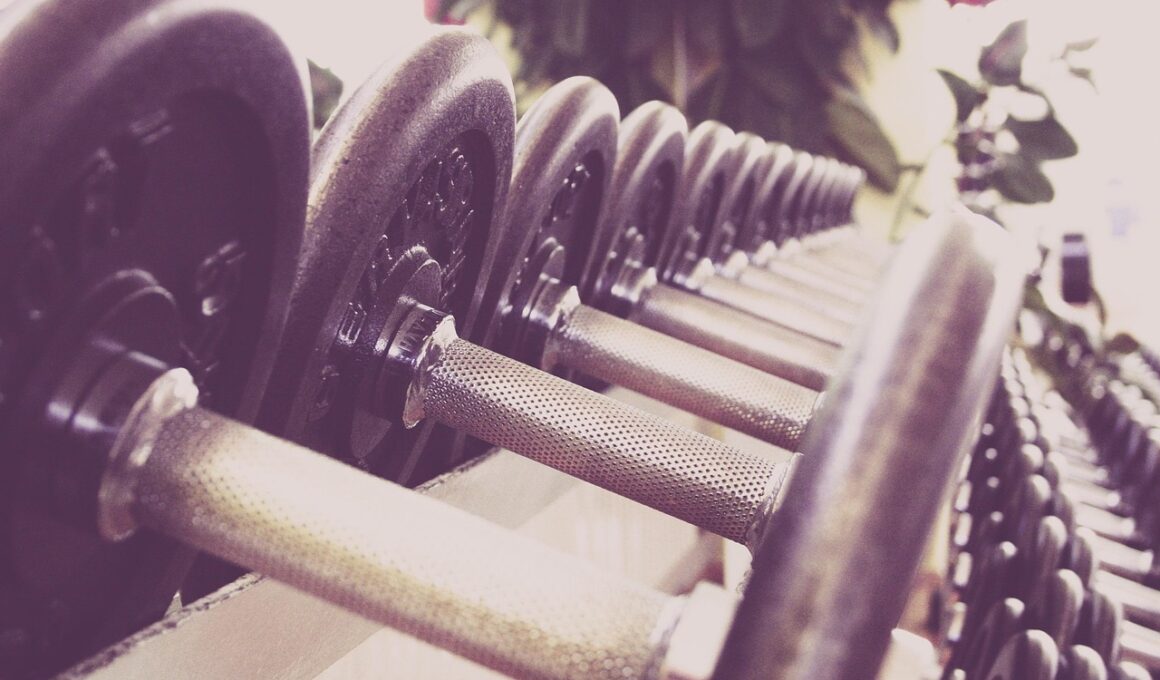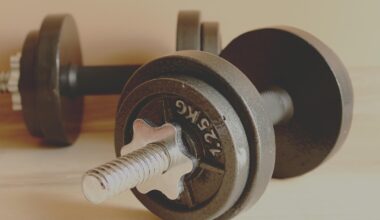Pendlay Row Tutorial: Video Breakdown for Proper Form
Understanding how to execute the Pendlay row effectively is crucial for anyone looking to boost their strength and hypertrophy. The Pendlay row is an all-encompassing upper body exercise that targets the back, particularly the lats, rhomboids, as well as the biceps. To execute the move properly, start from a standard bent-over position with your feet shoulder-width apart, maintaining a firm grip on the barbell. Ensure that the barbell is set on the ground before initiating the lift, which differentiates it from traditional bent-over rows. A common mistake is to lift the barbell from an elevated position, reducing the exercise’s benefits. Focus on pulling the barbell to your lower abdomen, keeping your elbows close to your torso. Your back should remain flat throughout the movement, avoiding any rounding that might lead to injury. Video demonstrations are essential for learning the nuances, as they often highlight common mistakes that many novices make. Visit reliable platforms where such video tutorials are available and study them closely to maximize learning.
The Pendlay row is not just about strength; it’s about mastering proper technique. One fundamental aspect of the Pendlay row is breathing. Focus on your breathing pattern, exhaling during the upward movement and inhaling as you lower the weight. This helps maintain intra-abdominal pressure, contributing to better stability throughout the lift. Another critical component is positioning; ensure that your body forms a rigid straight line from your head to your hips. This alignment plays a significant role in ensuring optimal muscle activation and reducing the risk of injury. When practicing this row, consider starting with lighter weights until you are comfortable with the form. Gradually increase the weight once you feel confident in your technique. Keep your core engaged to stabilize your torso and avoid unnecessary swinging or jerking movements. Many fitness enthusiasts find that recording their sessions helps identify form issues that may otherwise go unnoticed. After analyzing your video, you can make necessary adjustments in real time to enhance performance. Make sure to practice consistently for optimal results.
Key Points of Pendlay Row Technique
As you delve deeper into the Pendlay row, it is essential to focus on a few key points that define proper technique. A proper grip is significant; the overhand grip allows for maximum back engagement. When gripping the bar, your hands should be placed just wider than shoulder-width. Additionally, concentrate on keeping your shoulders retracted and down throughout the movement. The stretch in your back should be palpable, allowing for full range movement. Also, remember that the Pendlay row requires explosiveness; after the barbell comes to a complete stop on the ground, initiate the lift with power without resorting to jerking. This explosive lift encourages muscle growth and increases power. Furthermore, it’s vital to listen to your body; if you experience discomfort or unusual strain, reevaluate your form and adjust accordingly. Regularly watching and studying video tutorials can provide insights into subtle adjustments that can be transformative for your practice. Consider also integrating variations of the row, as this can provide comprehensive strength training.
Incorporating the Pendlay row into your routine is beneficial, but be aware of how to balance it with other exercises. Combining rowing movements with pulling exercises like pull-ups can create a well-rounded back workout that optimizes strength and aesthetics. Resistance training should be complemented with adequate rest; your muscles need recovery time to grow stronger. Moreover, pay attention to your nutrition; proper fueling with proteins and carbs can augment your recovery. A common misconception is that more weight equals more progress; however, focusing on form and progressive overload is crucial for sustainable gains. Abide by the principle of not prioritizing heavy weights over proper execution to mitigate unwanted injuries. Keeping a workout journal to track your progress and learning milestones can be motivational. This practice allows you to reflect on your personal development and establish realistic goals over time. Embrace the journey, and don’t hesitate to seek advice from experienced lifters or personal trainers. Continuous learning will contribute to achieving mastery in the Pendlay row and weightlifting in general.
Benefits of Pendlay Row in Strength Training
One unique aspect of the Pendlay row is its multifunctional benefits. Not only does this exercise primarily work the upper back, but it also greatly enhances overall posterior chain strength. The posterior chain includes vital musculature, such as the hamstrings, glutes, and lower back. By strengthening these areas, you support better performance in other compound lifts like deadlifts and squats. Furthermore, the Pendlay row can enhance grip strength; a crucial yet often-neglected component for overall lifting performance. Improved grip strength can benefit various exercises, making it an essential focus area for weightlifters. Additionally, this row promotes better posture; it encourages a neutral spine and can lead to a more upright stance in daily life, counteracting the effects of prolonged sitting. Therefore, including the Pendlay row in your training routine can offer both functional and aesthetic enhancements. Beyond the physical aspects, practicing this exercise can also build mental resilience by pushing through challenging weight sessions. With commitment and diligence, the Pendlay row can significantly contribute to your weightlifting journey.
Many beginners often question how frequently they should incorporate the Pendlay row into their workout regimen. Ideally, this exercise can be done once or twice a week, depending on one’s fitness level and overall training goals. Balancing it with other pulling movements ensures that the back muscles are engaged adequately without overtraining. Moreover, alternating with variations like dumbbell rows can prevent monotony and promote balanced muscle development. Also, ensure a comprehensive warm-up routine before diving into heavy pulling to prevent injuries. A five to ten-minute warm-up focusing on mobility and activation will prepare your body for the demands of the workout. Some lifters prefer a push-pull-leg split, integrating this row on pull days. Alternatively, you can place it in a full-body workout to ensure efficient utilization of your lifting days. Consider consulting with a qualified trainer if you are uncertain about how to program this exercise into your routine. Personalized guidance can help you establish a plan that aligns with your goals and lifts effectively.
Common Mistakes to Avoid
When attempting the Pendlay row, many lifters fall into specific common traps that can impede progress and increase injury risk. A frequent mistake is using momentum rather than strength to lift the weight; this tends to negate the benefits of the exercise. Instead, focus on controlled movement that emphasizes muscle activation rather than relying on jerkiness. Also, avoid hunching your upper back or allowing your shoulders to round; this can lead to strain and potential injury over time. Maintaining a flat back ensures proper mechanics and reduces stress on the lower back. Furthermore, it’s vital not to neglect the eccentric phase of the lift; many aim for a fast lift but slow down the return helps with muscle growth. Keep the bar close to your body as you lower it to maintain tension and momentum. Consistently assessing your form through videos or feedback from training partners can help catch these mistakes. As you progress, engaging with a community of lifters online or in-person can foster growth and improvement.
Finally, documenting your Pendlay row journey through video analysis can be invaluable for long-term improvement. Not only does video capture form, but it also highlights strengths and areas requiring work. Revisiting footage allows you to appreciate progress, keeping you motivated. Many athletes recommend comparing previous performances to current ones to analyze advancements in strength and technique. Seeking feedback from communities on platforms like social media can yield helpful insights. If you’re part of a gym community, consider sharing your videos for peer evaluation, which can create productive discussions around proper execution. Many experienced lifters are eager to help beginners refine their forms and routines. Keep honing your approach with the Pendlay row and celebrate small victories along the way. The journey of mastering this technique, while demanding, is also deeply rewarding. By combining proper form, consistency, and engagement with community resources, you’ll find yourself progressing more rapidly than ever. Embrace the Pendlay row as a cornerstone of your training. It can offer you benefits beyond the gym—enhancing your mental toughness and discipline in pursuit of fitness goals.


